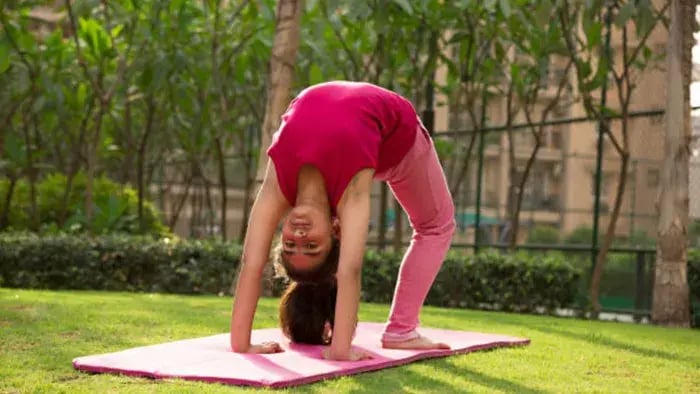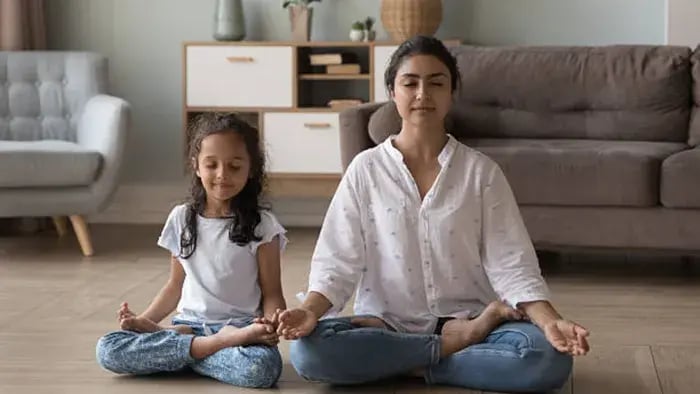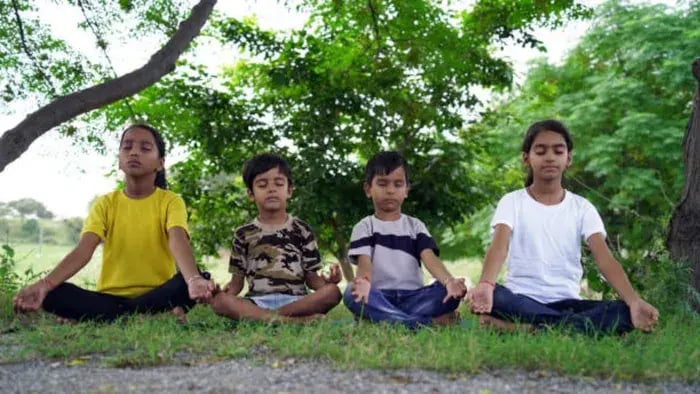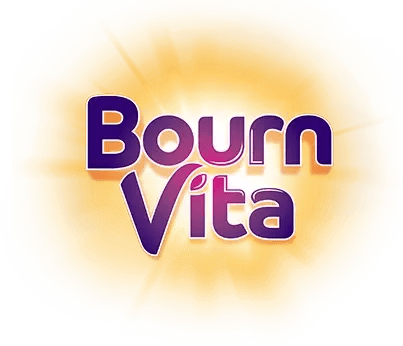- Deep Belly Breathing
- Progressive Muscle Relaxation
- Visualization
- Gentle Stretching
- Mindful Coloring or Drawing
- Listen to Calming Music
- Mindful Movement & Observation
- Yoga Poses for Relaxation
- Quiet Journaling or Gratitude List
Introduction
After a long day of learning, rushing between classes, and socializing, kids and teens carry more mental and physical tension than parents realize. Once school is over, their minds may still be racing with thoughts about homework, friendships, or things they forgot to say or do. Helping them slow down and switch off is essential for emotional balance and focus at home.

Relaxation exercises are a gentle way to release built-up tension, especially for kids. Simple practices, such as deep breathing, gentle stretching, guided imagery, or quiet reflection, help calm the nervous system and bring the body into a more relaxed rhythm. These exercises require minimal time and space. Just a few quiet minutes can make a big difference in how your child feels, behaves, and communicates after school.
When relaxation becomes part of a child’s daily routine, it teaches them to tune in to their feelings and take control of how they respond to stress. It improves sleep, sharpens concentration, and supports emotional regulation. For teens, especially, it gives them a moment to disconnect from screens and reconnect with themselves.
By encouraging these habits, you’re not only helping your child feel better in the moment but also giving them lifelong tools to manage stress in healthy, mindful ways.
9 Simple Relaxation Exercises to Help Kids and Teens Unwind After School

School days can be mentally and emotionally exhausting. Between academics, peer pressure, and tight schedules, your child might come home feeling restless, overwhelmed, or tired. The right relaxation exercises can help your child release stress and reset for the evening ahead. These calming techniques are easy, effective and can be made part of your child’s daily routine. Here is a list of different types of relaxation exercises for kids.
Deep Belly Breathing
Ask your child to sit or lie down, place a hand on their belly and slowly breathe in through the nose, feeling their belly rise, then slowly breathe out through the mouth. Make sure to repeat this for 5-10 breaths. According to a study published in, Brain Sci. 2023, deep breathing lowers stress hormones, regulates heart rate and gives them a sense of control when everything feels too much.
Progressive Muscle Relaxation
Guide your child to tense and then release different muscle groups, starting from the feet and working up to the head. For example, ask them to squeeze their toes tightly for a few seconds, then relax. As per a research published in, Evid Based Complement Alternat Med. 2021, this helps release physical tension they may not even realise they’re holding, especially after a full day of sitting or carrying a schoolbag.
Visualization
Use soft words to help your child imagine a peaceful place, a quiet beach, a green forest, or even their favourite holiday spot. Ask them to picture the colors, sounds, smells, and feelings. According to NITI Aayog, visualization can help shift their focus from school worries to something comforting and safe.
Gentle Stretching
Simple stretches, such as touching toes, reaching up to the sky, or gently twisting the spine, help release physical tension and improve blood circulation. Ask your child to stretch slowly while breathing deeply. According to a study published in J Health Psychol. 2023 it’s a great way to transition from a long day of mental activity to a relaxed evening.
Mindful Coloring or Drawing
Give your child a coloring book or blank sheet and let them draw or color without rules or expectations. Focusing on patterns, colors, and movement helps kids calm their busy minds and feel relaxed. As per a study published in, Behav Sci (Basel) 2018, it’s a great way to encourage creativity while they quietly process emotions. It can be a beneficial mind relaxing exercise for your kid.
Listen to Calming Music
Play soft instrumental music or nature sounds in a quiet room and ask kids to lie down or sit comfortably and listen for a few minutes. Research conducted by Children (Basel). 2019, states that the slow rhythms help calm breathing and heart rate, and help kids transition from school stress to the comfort of being at home.
Mindful Movement & Observation
Ask your child to pick any object around them, like a plant, a soft toy, or a pencil, and observe it for a minute. What do they see? How does it feel? What shape is it? As per a study conducted in Cogn Behav Pract. Research in 2015 suggested that mini mindfulness practices sharpen focus and quiet the mind by anchoring attention in the present moment. This one could be a substantial choice for a body relaxation exercise.
Yoga Poses for Relaxation
Introduce a couple of simple poses, such as child’s pose, butterfly stretch, or legs up the wall. These gentle movements release tension and quiet the body. Practicing them with slow breathing helps your child reconnect with their body after being in a classroom or on a screen.
Quiet Journaling or Gratitude List
Give your child a notebook to write freely or note three things they enjoyed today. Journaling helps to process thoughts and emotions, and a short gratitude list shifts their focus to the positive. According to UNICEF, it’s an excellent way for kids to unwind before evening activities or bedtime.
Conclusion

Having a peaceful after-school routine can work wonders for your child’s mood, focus, and emotional balance. With just a few minutes of quiet, intentional relaxation, your child learns to manage stress gently and confidently, skills that will serve them not just today but for years to come.
FAQs
What are some effective relaxation techniques for kids and teens?
Some common effective relaxation techniques for kids and teens include yoga, deep breathing, and gentle stretching.
How can I help my child/teen learn to relax?
You can help your child learn to relax by providing them proper guidance to practice relaxation exercises at home or enrolling them in professional classes.
What are the benefits of relaxation for kids and teens?
Some of the benefits of relaxation exercises for children and teenagers include muscle strengthening, stress relief, and a calming effect on the mind.
Are there any age-appropriate differences in relaxation techniques?
Yes, there are age-appropriate differences in relaxation techniques. For instance, younger kids may benefit more from guided stories and meditation. On the other hand, older kids may benefit more from meditation and yoga.
Her love for storytelling began with reading her grandfather’s speeches, where Tarishi saw the power of words in creating lasting memories. Combining her passions for food and writing, she has turned her life into a fulfilling path of sharing stories that celebrate flavours and how food brings communities together.
The views expressed are that of the expert alone.
The information provided in this content is for informational purposes only and should not be considered a substitute for professional medical advice, diagnosis, or treatment. Always seek the advice of your physician or another qualified healthcare provider before making any significant changes to your diet, exercise, or medication routines.
References
https://www.unicef.org/india/stories/16-ways-ensure-your-childs-mental-well-being
https://pmc.ncbi.nlm.nih.gov/articles/PMC4403871/
https://pmc.ncbi.nlm.nih.gov/articles/PMC6678429/
https://pmc.ncbi.nlm.nih.gov/articles/PMC5836011/
https://pmc.ncbi.nlm.nih.gov/articles/PMC10387721/
https://www.niti.gov.in/sites/default/files/2021-11/BCG_SATHE_DIGITAL_13112021_0.pdf
















